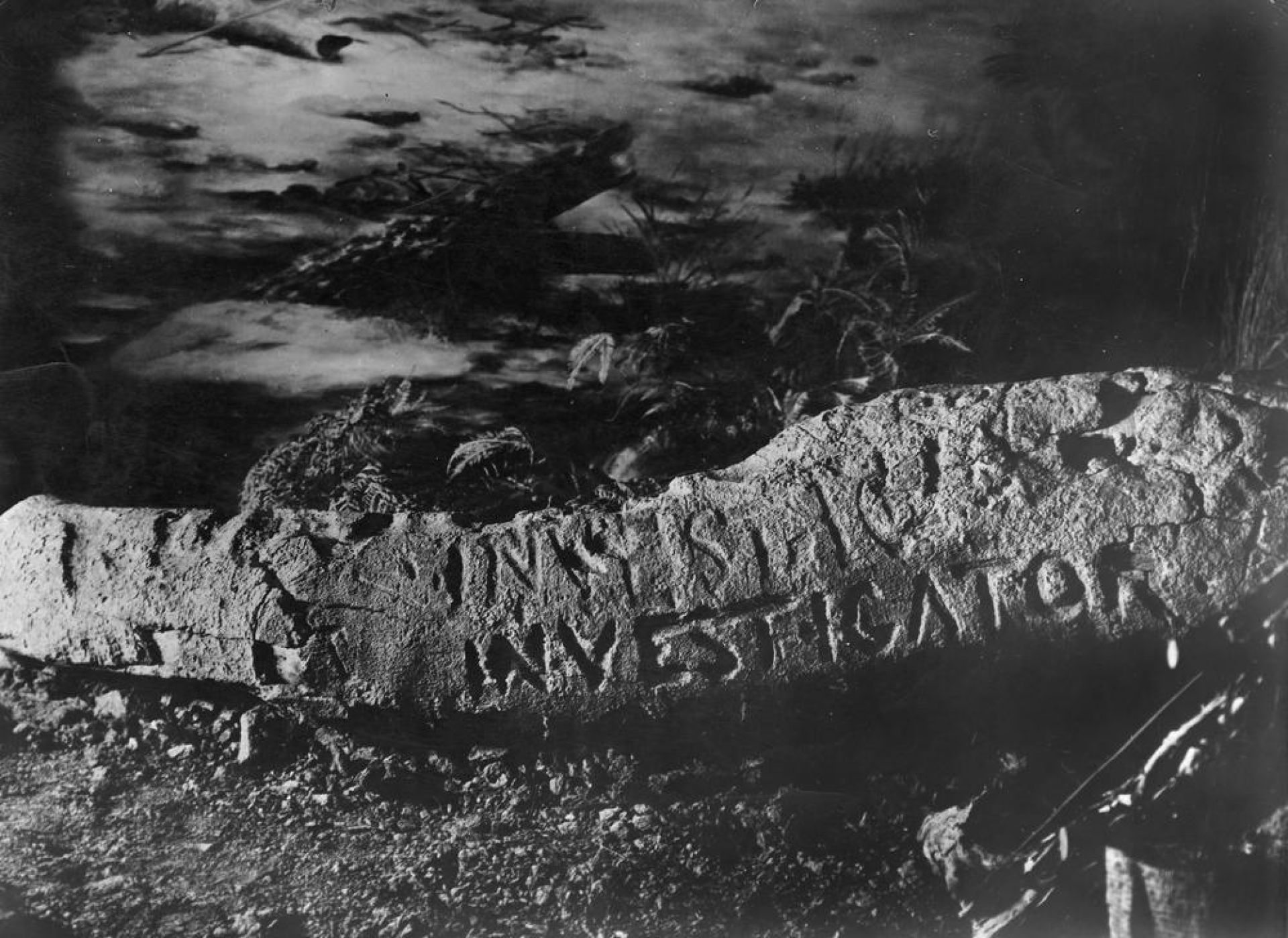Media Releases
Mystery deepens around historic Investigator Tree

James Cook University and Queensland Museum researchers have found evidence that a fabled historic tree may be more than it seems. The research has re-opened the debate about outsiders visiting Australia before British explorers.
JCU PhD student Sarah Collins and Professor Sean Ulm worked with Queensland Museum’s Dr Geraldine Mate to re-examine the Investigator Tree, now housed in the Queensland Museum. The tree grew on Sweers Island in the Gulf of Carpentaria where it was marked with the name of explorer Matthew Flinders’ ship HMS Investigator in 1802.
“The Investigator inscription was just one of 28 inscriptions made by visitors between at least 1802 to at least 1866, either reported by others closer to the time or which can still be seen on the tree today,” said Ms Collins.
She said the tree could be thought of as an unusual relic of nineteenth century social media - inscribers left messages which, as with Facebook, some chose to respond to while others simply observed.
“In that sense it could be thought of as a conversation thread that has endured for nearly 220 years,” said Ms Collins.
She said the mystery was that 20 of the tree markings reported on in the historical literature could not be found today. The missing inscriptions include those that 19th Century witnesses claimed pre-dated Flinders’ visit and were in Dutch, Chinese and/or the language of Macassan people, from what is now Indonesia.
“For the first time we did a physical examination of all markings on the tree, in combination with a comprehensive review of the archival and historical records. From the varied reports of the position of the tree and its markings we now believe there were at least three inscribed trees on Sweers Island,” said Ms Collins.
She said this leaves open the possibility that non-English characters were inscribed on a tree at Sweers Island other than the tree that is now in the Queensland Museum.
“The Maccasans, whose script could be misinterpreted as Chinese, are known to have visited the islands before and after Flinders’ arrival, as are the Dutch. Other 19th Century witnesses wrote of finding the wrecks of Chinese ships, at least one of which was claimed to pre-date Flinders’ landing,” said Ms Collins.
Queensland Museum’s Acting Head of the Cultures and Histories Program, Dr Geraldine Mate said “the question of pre-Flinders inscriptions on Sweers Island is controversial and remains circumstantial, but the new work shows it remains an intriguing possibility.”
The research was funded by the Australian Research Council and undertaken in partnership with the Kaiadilt Aboriginal Corporation and Queensland Museum.
Sarah Collins (Cairns)
E: sarah.collins3@my.jcu.edu.au
Dr Geraldine Mate (Brisbane)
E: geraldine.mate@qm.qld.gov.au